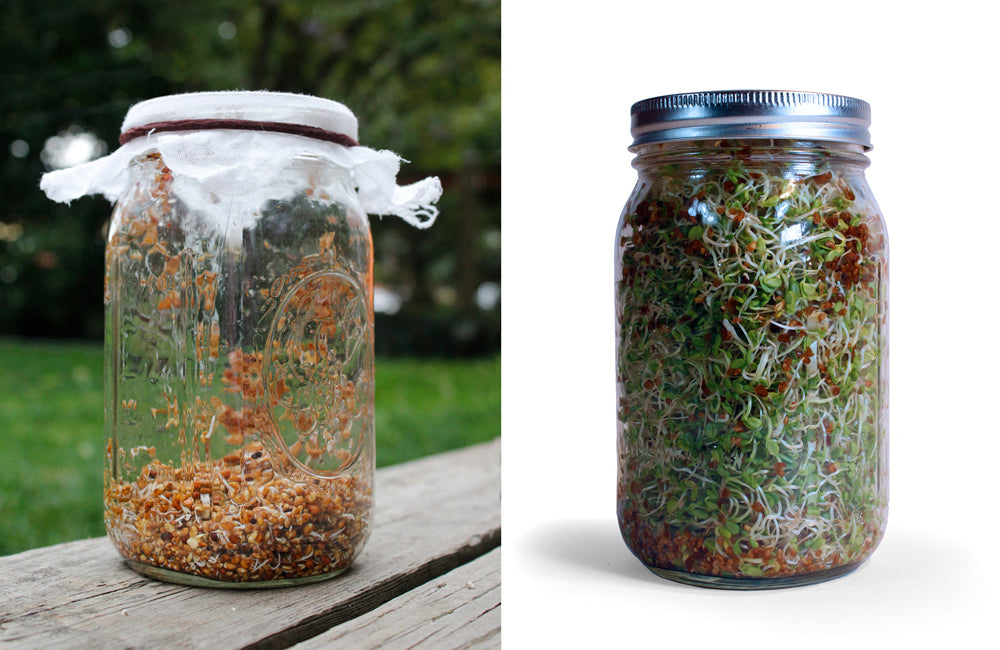Hello, my name is Paul, and I am the Marketing and Brand Specialist here at Hummingbird! I've been hearing about how sprouted seeds are nutrient-rich and good for my health, easy to grow, and even fun! So, I thought I'd give it a try. I've documented the steps in my process and wanted to share them with you.
I picked up some Organic Sprouting Seeds which we mix-up, right here at Hummingbird, in Eugene, Oregon. The seed mix has four, certified Organic sprouting seeds—Alfalfa, Crimson Clover, Radish and Broccoli--coming from farmers we know in the Pacific Northwest and USA. The Organic Crimson Clover Sprouting Seed is grown by Jim Bronic of Praying Mantis Farm in Canby, Oregon. The Broccoli Sprouting Seed is grown on a farm located in the Central Valley of California. The Organic Alfalfa Sprouting Seed is grown on a farm in Idaho, and the Organic Radish Sprouting Seed is grown in the U.S.
 This is considered a beautiful, somewhat spicy, delicious and nutritious mix packed with protein, iron, and high in antioxidants. The seeds are prepared specifically for sprouting.
This is considered a beautiful, somewhat spicy, delicious and nutritious mix packed with protein, iron, and high in antioxidants. The seeds are prepared specifically for sprouting.
The process of sprouting seeds is easier than you might think. I used a quart mason jar, a patch of cheesecloth, a clean rubber band, and a screen that provided a little coarser straining later in the process.
Step 1 - Soak
I added two tablespoons of seeds to the jar. This doesn't seem like much, but remember, they grow – and there needs to be room for air to circulate inside the jar throughout the sprouting process. Then, I covered the seeds with plenty of luke warm water, and left them soaking overnight to start germination.Step 2 - Rinse and Drain
Step 3 - Enjoy and Store
Finally, I rinsed and emptied the sprouts out on a clean kitchen towel and let them dry for an hour or so in the sun to green them up. I gathered them and put the nearly dry sprouts into a glass container with a good sealing lid and put it in the fridge. The same jar would work, but I used a flat rectangular glass container that makes getting the sprouts out in portions as I needed them a little easier. They should remain good for 2-3 days refridgerated. If they begin to smell and get a little slimy then its time to compost them. That's it. Just watching them grow is the fun part, and eating them of course.
I've heard you can sprout just about any plant whose stems and leaves you'd eat when it's a mature plant. This little project left me feeling excited about the possibilities.
An important safety note and disclaimer: Sprouts can be subject to contamination, leading to food-borne illnesses. Always wash your hands thoroughly before handling foods, and keep sprouting equipment and all kitchen surfaces clean to avoid cross contamination.


1 comment
Nice article